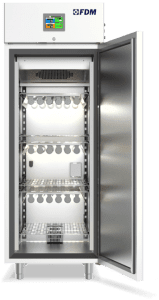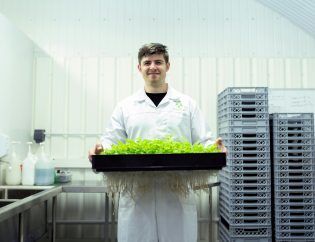
We never think about it, but most of the objects around us are exposed to sunlight for several hours a day. Solar radiation has a non-negligible impact on many of the products and materials we use every day. From the plastic of garden furniture to car upholstery, passing through the fabrics used in clothing; just to give a few examples.
For this reason, the solar radiation test is essential to guarantee the durability and reliability of many products and is used in various production sectors.
Today we will describe the solar radiation test and the laboratory instrument with which we perform it: the solar radiation chamber.
What is Solar Radiation
By solar radiation we mean the energy emitted by the sun in the form of light, which in turn is divided into visible, ultraviolet (UV) and infrared (IR) light. Although it is the basis of life, prolonged exposure to solar radiation can cause different types of damage to materials. For example, UV rays can degrade polymer molecules, making plastic brittle and prone to cracking, while visible and IR light can heat materials, causing thermal expansion and structural alterations.
For this reason it is necessary to understand the effect of solar radiation on each type of product and material and conduct a rigorous series of tests that verify the limits and any design defects.
Illumination Chamber
Discover the latest features of FDM Growth Chambers.
Solar Radiation Tests
The various solar radiation tests deal precisely with this.
To conduct them, there is a special laboratory instrument called an illumination chamber.
The illumination chamber is a particular type of climatic chamber which, in addition to being able to alter and monitor the temperature and relative humidity parameters inside, has different lighting sets that simulate exposure to solar radiation.
The procedures for solar radiation tests are outlined by a series of standards issued by internationally recognized bodies, such as the ISO, International Organization for Standardization.
Among these we can mention ISO 4892-2 and ISO 16474-1:2013, which regulate the tests for solar exposure of plastic materials and paints and varnishes respectively.
How the Solar Radiation Test Works
Solar radiation tests are conducted by placing a sample of the product or material to be tested and exposing it to solar radiation for a predetermined period of time or a series of cycles.
Okay, but what kind of radiation?
In fact, there are different types of lamps that simulate a variety of solar radiation intensities. The most common are the following:
UV (Ultraviolet) Lamps: As the name suggests, these lamps emit only the ultraviolet part of the light spectrum. They are used to evaluate polymer degradation, loss of elasticity and other physical and chemical changes caused by UV rays. In particular, they are used to test plastic materials, coatings and fabrics.
Xenon Lamps: Xenon lamps are designed to replicate the full spectrum of sunlight, including visible light and some infrared radiation. As a result, they go on to test how the materials react to full sunlight, including color changes, aging and thermal resistance.
Fluorescent Lamps: These lamps emit a light that simulates indoor artificial lighting conditions. They are used to test materials intended for indoor environments, where direct sunlight is limited. They are therefore essential useful for testing the effect of artificial lighting on materials and products that will be used mainly inside buildings.
You cannot find the ideal chamber for your test?
Create your own environment, according to any test requirement
The FDM Solar Radiation Chamber
FDM - Environment Makers has been a consolidated reality in the field of environmental testing for over 70 years.
Our climatic and environmental chambers can be equipped with Solar Boxes to carry out all tests on products and materials in accordance with the aforementioned standards.
Furthermore, our illumination chambers can be equipped with various lighting sets that can be arranged inside the chamber depending on the customer's needs. In addition to the lamps we talked about, FDM illumination chambers also have specific lamps for growing organisms, such as BioLamps and ArabLamps. The latter was designed specifically for the cultivation of Arabidopsis. We talked about it here.
Would you like to receive a quote or do you have questions about the product?
Contact us to receive more information about this Product.




